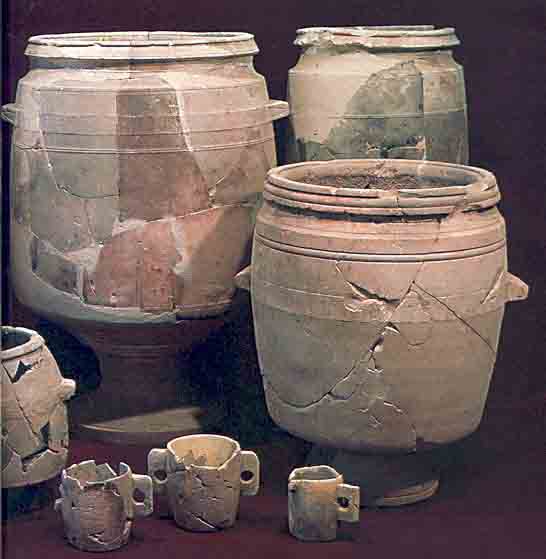Image Details

Yitzhak Magen
This array of vessels from Jerusalem provides evidence of the stone-carving industry that flourished in the city at the end of the Second Temple period (from the first century B.C.E. until the Roman destruction of Jerusalem in 70 C.E.). Highly skilled artisans carved this collection, which includes small household mugs (foreground), a wine jar (left of center) and large water storage jars, all from the white chalk (a soft limestone) abundant in quarries surrounding the city.
According to Jewish law, stone vessels, unlike pottery, are not susceptible to becoming ritually impure. The unprecedented increase in the production of these vessels in the first century C.E. indicates that purity laws were more strictly observed at this time than ever before.
The largest vessels shown here, measuring 2 to 3 feet tall, may be of a ritual type described in the gospel account of the marriage at Cana. John 2:6 reads: “Now six stone jars were standing there, for the Jewish rites of purification, each holding 2 or 3 firkins (the equivalent of 20 or 30 gallons)” (John 2:6).
